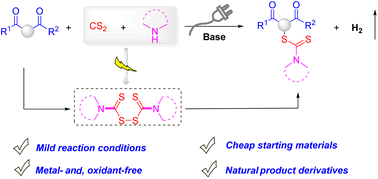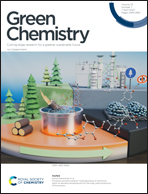Electrochemically driven α-thiocarbamylation via a dehydrocoupling strategy of β-ketoesters with amines and CS2†
Abstract
The development of atom- and step-economical methods for converting hazardous CS2 into harmless chemicals is a challenging endeavor. Herein, we disclose a feasible strategy for the electrochemical dehydrogenative coupling of CS2 and amines with β-ketoesters, which leads to dithiocarbamate intermediates in the presence of bases. In addition, inexpensive starting materials, broad substrate scope, and compatibility with natural product moieties make this efficient and sustainable reaction practical.



 Please wait while we load your content...
Please wait while we load your content...